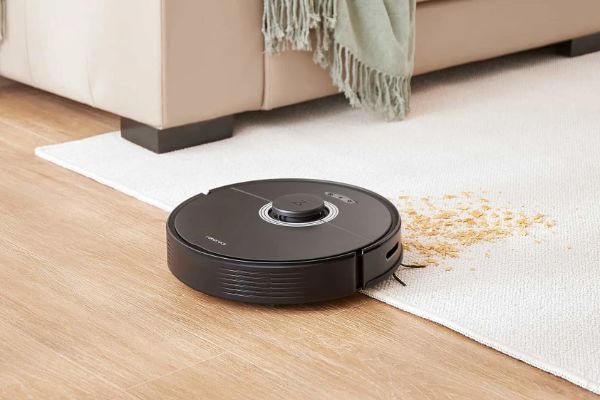Robot vacuums have become a popular and convenient tool for keeping our homes clean and tidy. These smart devices are designed to navigate through different floor surfaces and obstacles to ensure efficient cleaning. One common concern that many homeowners have is whether robot vacuums can handle transitions between different flooring types, such as moving from hardwood to carpet, or navigating over thresholds.

The good news is that most modern robot vacuums are equipped with advanced sensors and intelligent navigation systems that allow them to smoothly go over transitions between various floor surfaces. Here’s how robot vacuums handle transitions:
- Smart Sensors: Robot vacuums are equipped with a variety of sensors, including infrared sensors, laser sensors, and camera-based sensors. These sensors help the robot detect and map the environment, enabling it to recognize changes in floor types and plan its cleaning path accordingly.
- Height Adjustment: Many robot vacuums come with height-adjustable wheels or suspension systems that allow them to adapt to different floor heights. When approaching a transition, the robot vacuum can adjust its height to ensure a seamless transition from one surface to another.
- Brush Design: Some robot vacuums have specialized brush designs that are optimized for different floor types. For example, they may have rubberized or silicone brushes that are gentle on hardwood floors and effective on carpets.
- Power Modes: Certain robot vacuums offer different cleaning modes, including a “turbo” mode for carpets and a “quiet” mode for hardwood floors. These modes adjust the vacuum’s suction power and cleaning pattern to cater to the specific floor type.
- Virtual Barriers: Some robot vacuums come with virtual barrier accessories that you can place to block off specific areas or transitions. This feature ensures that the robot doesn’t accidentally cross over areas where it might get stuck or encounter obstacles.
- Learning Capabilities: Advanced robot vacuums can learn and adapt to your home’s layout over time. As they become familiar with the transitions and floor types in your home, they can optimize their cleaning paths and handle transitions more effectively.
Despite the capabilities of modern robot vacuums, there may still be some instances where certain transitions pose challenges. For example, very high thresholds or transitions between dramatically different floor heights might be more difficult for some robot vacuums to navigate.
To ensure a smooth cleaning experience, it’s essential to consider the following tips:
- Clear Obstacles: Before starting the cleaning cycle, make sure to remove any obstacles or clutter that could obstruct the robot vacuum’s path, especially near transitions.
- Regular Maintenance: Keep your robot vacuum in good working condition by regularly cleaning its sensors, brushes, and wheels. This ensures optimal performance when navigating over transitions.
- Test and Observe: When using your robot vacuum for the first time or after rearranging furniture, observe how it handles transitions. This will help you identify any problematic areas and make adjustments if necessary.
In conclusion, modern robot vacuums are designed to handle transitions between different floor surfaces efficiently. With their smart sensors, height-adjustable features, and learning capabilities, they can smoothly move from hardwood to carpet and back, ensuring a thorough and convenient cleaning experience for homeowners.
As technology continues to advance, we can expect robot vacuums to become even more adept at navigating complex environments and handling transitions seamlessly.
